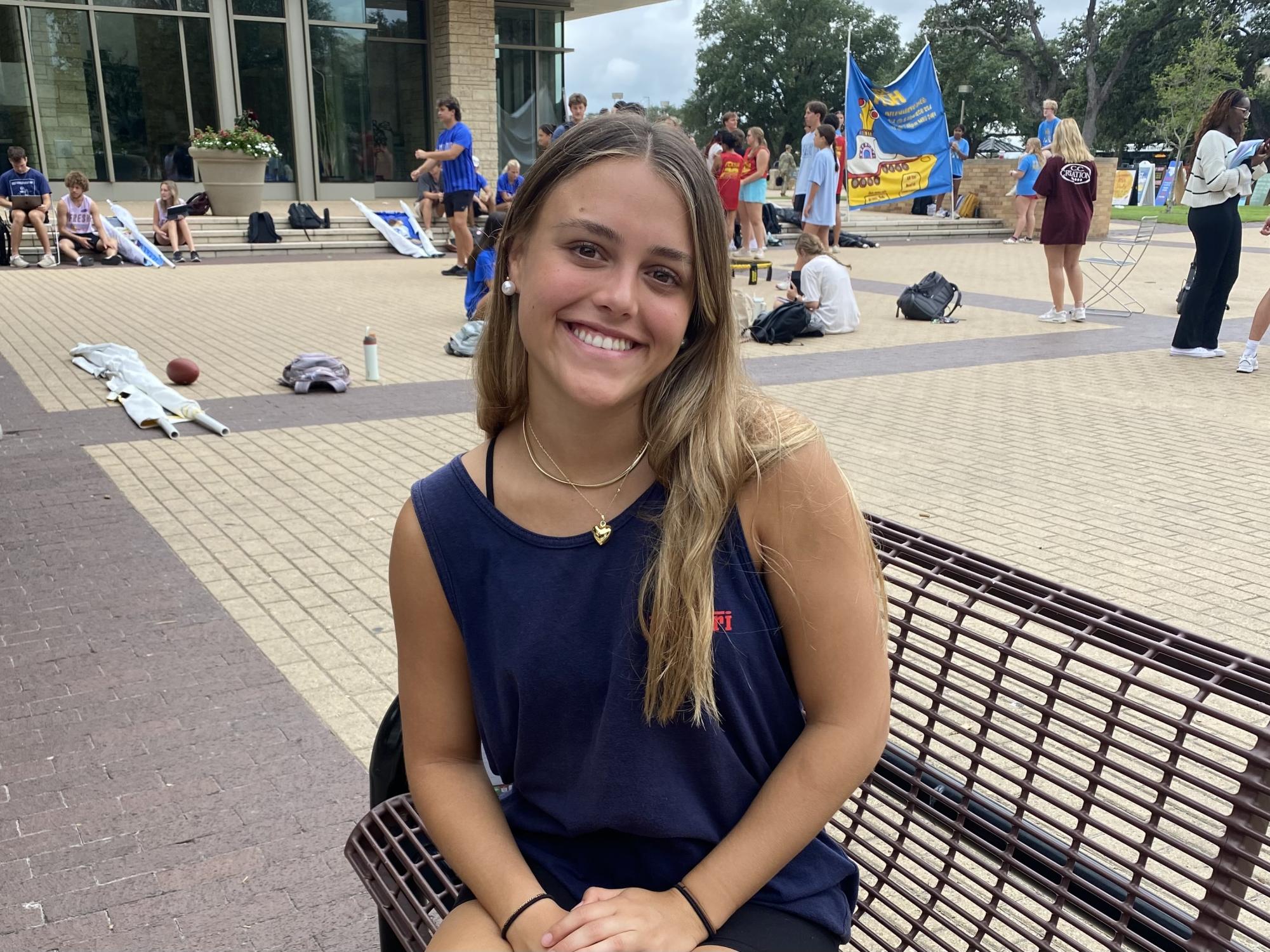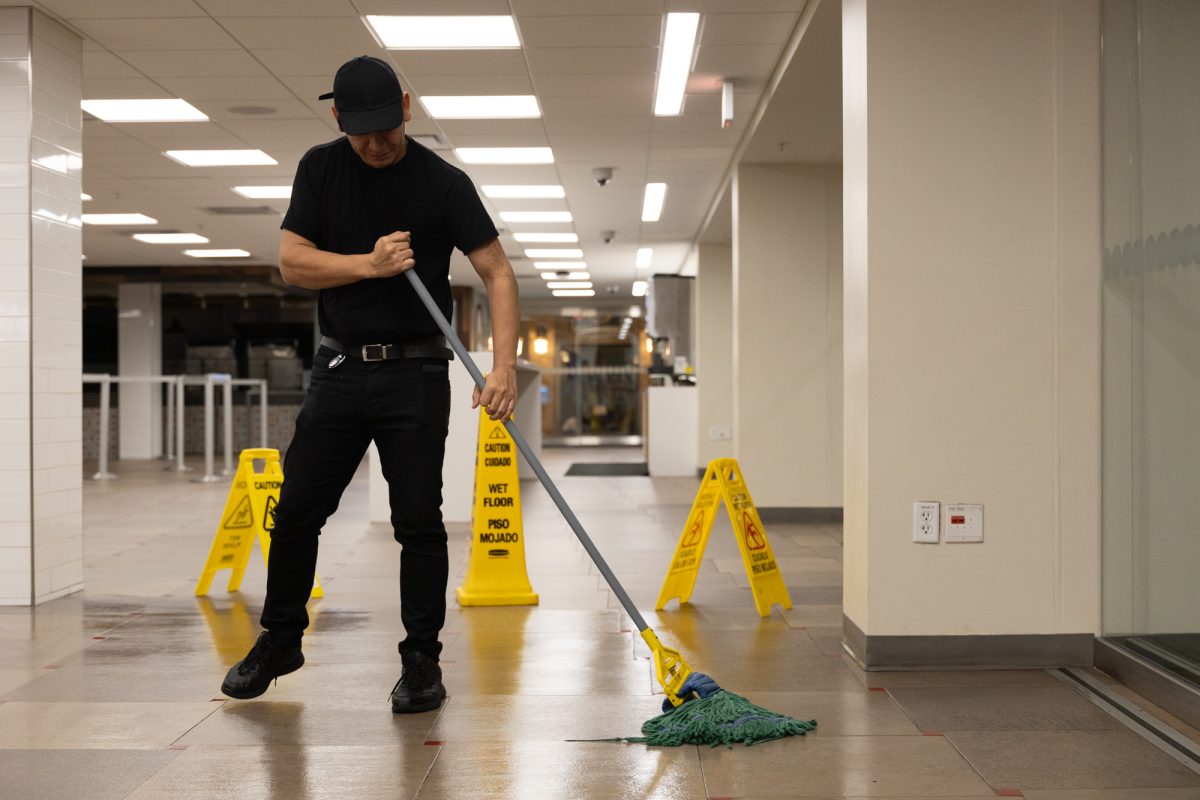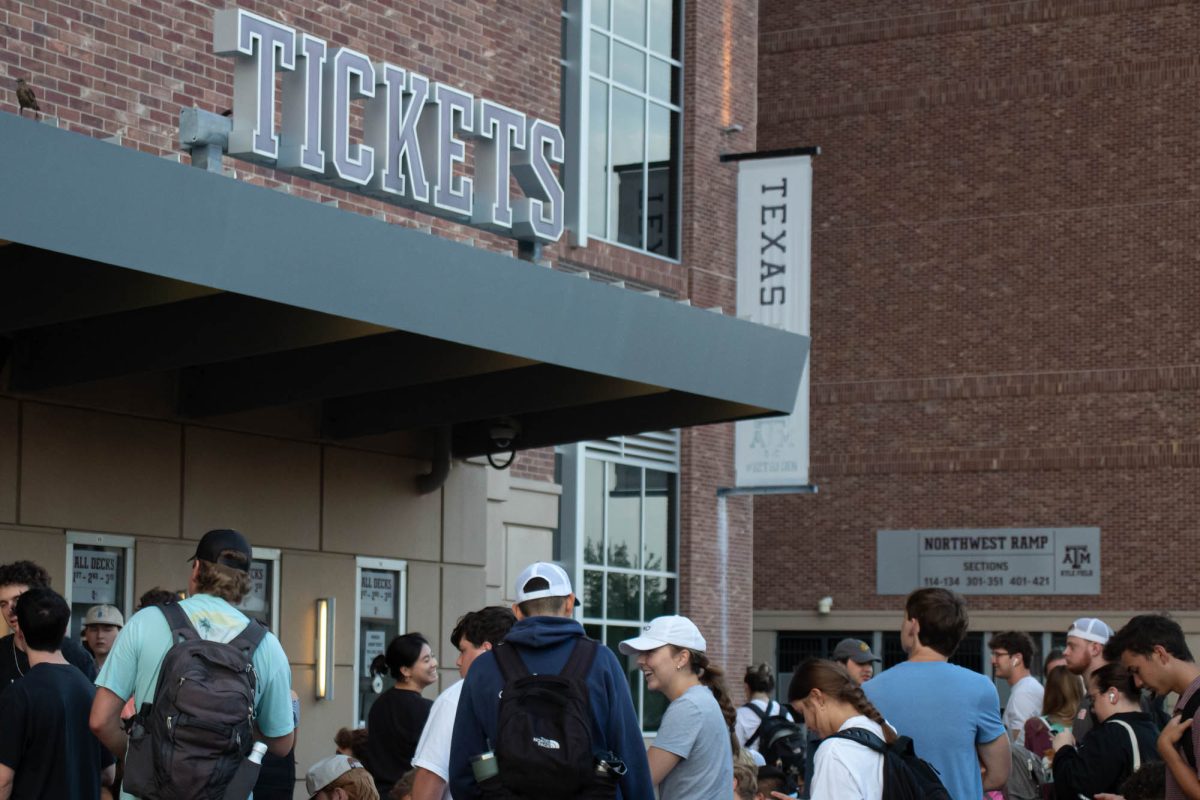Campus Voices: Aggie News

From a proposed high-speed rail that may someday whisk Aggies from Dallas to Houston in just 90 minutes to student awareness about “mushroom magic” as medicine for treatment-resistant depression, reporters from JOUR 203 901 interviewed people around the Memorial Student Center, or MSC, and Rudder Complex on Sept. 12 about how news-making national headlines affect Texas A&M students.
Different reporters asked students about the risks of unintentional deaths from fentanyl and views on campus safety around alcohol-related accidents and their familiarity with campus resources for alcohol and drugs assessments and information.
The result is Campus Voices: Aggie News.
Amtrak recently received $64 million in a federal grant to continue planning the proposed high-speed railway project that could potentially cover the 240-mile distance between Dallas and Houston in 90 minutes, moving at speeds of 205 mph, according to a Sept. 6 Houston Chronicle article.
With Amtrak considering a stop in the Brazos Valley, six Aggies weighed in on whether the local train stop would be of interest to them and how they would use it.
Although the train proposal is a new concept to accounting sophomore Meredith Shults, she said she would use it to travel to her hometown in Dallas.
“I probably spend $20 on gas from home to here, and it’s three and a half hours,” Shults said. “Traffic is bad, especially in Waco. I’d avoid a flat tire and Waco for a train ticket.
Considering gas prices versus ticket prices, allied health sophomore Mackenzie Balzen agreed that she would consider the train under certain circumstances.
“Yeah, I’d use it if the train ticket is cheaper than gas,” Balzen said. “Gas is expensive.”
While student concerns about efficient transportation were highlighted in the 2024 capacity report released by Texas A&M in July, another Aggie offered a mixed reaction to the Amtrak plan’s estimated $40 billion cost. The project will take over a decade to complete, according to Texas Central Railway.
Given the current national shortfall in revenue, biomedical sciences junior Cason Cox said the proposal’s cost is excessive.
“That’s a steep price considering our budget deficit right now,” Cox said. “I do think that it would be a good alternative for flying and cheaper for people that commute. I think if we can get that price down in any way possible, it could be a great opportunity, but for right now, there’s a lot of other stuff we need to focus on.”
One student said he would use the train to visit family and for relaxation.
“It’s my first time hearing about it, but I’d use the potential stop in Brazos Valley 1,000% percent — mainly for convenience and price,” business sophomore Will Hainley said. “I’d use it pretty often to visit my grandfather in Houston or for leisure and travel.”
Nuclear engineering junior Carson Corbell said the rail line could potentially replace car travel.
“Time convenience is a big [advantage],” Corbell said.
Considering the uncertainty of the current job market, biomedical sciences junior Claudia Gigliotta said the high-speed train could provide unique opportunities.
“I have not heard or seen anything about this, but I think it would be an efficient way to get people to one place,” Gigliotta said. “Plus, it can create more jobs because there will be more land and gas stations that’ll open up.”
Following news of a clinical trial at UTHealth Houston to test psychedelic mushrooms on patients with treatment-resistant depression, three Aggies were asked about Texas A&M mental health resources and their opinions on psilocybin as a possible treatment for depression.
All three Aggies interviewed said they either knew of someone struggling with mental health or they were struggling themselves. Only two said they could list a specific mental health resource available at A&M.
Since beginning college, 70% of college students admitted to struggling with mental health, according to a report administered by U.S. News/Generation Lab in March 2024. Only 37% of these students reported searching for their college’s mental health resources.
Working in a psychologist’s office, psychology senior Katie Underwood said she has come to know college students who are seeking help for anxiety and other mental health issues.
“I know a lot of people who have similar issues, and I have anxiety as well,” Underwood said. “So I understand a lot of what they’re going through. If [psilocybin] is something that people think can help, then absolutely. I say try it, especially if it is a more natural approach. But since it is a natural approach, we do need to be careful with that and not let people use it in a wrong way.”
There are college students who get overwhelmed with coursework and find themselves struggling with classes, which stresses them out, public health junior Adrian Gutierrez II said.
“I am aware of a few resources offered here at A&M, like University Health Services, but I haven’t tried to reach out,” Gutierrez said.
Biomedical sciences junior Kevin Umoche said he is vaguely familiar with various mental health resources at A&M.
“There’s like this peer counseling thing, I’m pretty sure,” Umoche said. “I don’t know about it, but I’m pretty sure I read about it somewhere.”
UTHealth Houston is currently in search of volunteers to test the effects of psychedelic mushrooms, or psilocybin, on patients with stubborn depression cases, according to a Sept. 4 article in the Houston Chronicle. The psilocybin treatment will be administered with what is described as “extensive therapeutic sessions,” in which a patient will be given a psilocybin tablet and then be monitored by a trained therapist throughout a six-hour session, according to the article.
As someone who said she struggles with depression and has tried psychedelic mushrooms before, nutrition sophomore Halle Ousley said she thinks mushrooms are great. Ousley said she would be completely open to being part of a clinical trial for psilocybin therapy.
“I think it’s a great resource that we have that we need to hone in on and use,” Ousley said.
Two doses of psilocybin administered with supportive therapy produced large and stable antidepressant effects throughout a 12-month follow-up period for 24 participants who completed a clinical trial, according to the Journal of Psychopharmacology.
Communication sophomore Tessa Grant said she was already familiar with some of the studies on psilocybin therapy.
“A lot of my family lives in Mexico,” Grant said. “People are more naturalistic there, and I’ve heard a lot about it — so it seems cool that people are researching it.”
Fentanyl overdoses have left a deadly mark on young adults across Texas.
Of the unintentional fentanyl-related deaths from 2018 to August 2022, 2,874 involved individuals aged 18 to 44, according to the Texas Department of State Health Services. Seven Aggies were asked about their awareness of fentanyl and where to look on campus for education and resources.
In an attempt to reduce the number of fatalities, Texas passed a law in September 2023 allowing prosecutors to charge someone with first-degree murder for intentionally providing a fatal dose of fentanyl. If convicted, sentences range from five years to life in prison. Prosecutors in Harris and Montgomery Counties who have murder trials in progress under the new law noted it is too early to tell if the law is reducing the number of fentanyl-related deaths, according to a Sept. 4 article in the Houston Chronicle.
One student said he was aware that fentanyl is commonly used as a pain-relieving drug in the medical field but that it is often misused and can be deadly when consumed outside of the hospital or not prescribed by a doctor.
Ocean engineering sophomore Noah Amos said he doesn’t know where to find education and awareness resources on campus about how the drug can be fatal.
“I don’t think there are enough campus resources if I haven’t heard about them,” Amos said.
This issue has gained more attention after news outlets published stories on Texas teens and young adults dying from fentanyl-related overdoses after thinking they were taking the attention deficit hyperactivity disorder drug Adderall, according to a March 2023 article in The Texas Tribune.
Another student noted she had gotten most of her knowledge of fentanyl in high school. Business administration freshman Sydney Mulhare said it takes work to find campus resources that have information about the drug.
“I think there are enough resources if you look into it,” Mulhare said.
General engineering freshman Poojita Balusu said she hasn’t heard much about fentanyl on campus but believes awareness efforts should be expanded. Balusu added she believes the law is reasonable if a drug sale results in a fatality.
“I know in high school they used to do more, and I think they should do more around college campuses and more buildings,” Balusu said. “I think there are some residential [trainings] on campus, but I feel like classes should include more education.”
The topic of fentanyl overdoses isn’t widely discussed on campus, dance science senior Karli Mason said. Combining legal action with educational and health services would be the most effective approach to addressing fentanyl overdoses and unintentional deaths, Mason said.
“I’ve heard about this before — on social media and things like that — but definitely not in College Station or on campus,” Mason said. “I haven’t really heard of anything like that, but I definitely agree with the law about being held accountable.”
The news is the only source that has brought awareness to fentanyl, general engineering freshman Henry Pitman said.
“I think that they might have touched on it at my new student conference, but other than that, I haven’t really heard anything about it on campus,” Pitman said.
Industrial distribution junior Thomas Lee said there is rarely talk about the topic of fentanyl on campus or through campus resources, but awareness is important. There should be more education about the drug, Lee said.
“If you educate people like dealers on the drug awareness, then there is a chance that they won’t do it again,” Lee said.
The Opioid Task Force is one campus program that helps students with drug abuse and rehabilitation.
The task force conducts research and education on opioids and how to identify an overdose, according to health.tamu.edu. The website also states that its vision is to improve the health and lifestyle of Texans by decreasing burdens caused by the opioid overdose epidemic through collaboration with dentistry, medicine, nursing, pharmacy and public health.
Assessments for alcohol and other drug use are available as part of campus health services, according to University Health Services. The 45-minute counseling session includes a clinical interview to gather information about the student’s past alcohol and/or drug use as well as to identify any life factors that may be contributing to substance use.
The Aggie Recovery Community offers support to Aggies who are seeking or are in recovery from substance use disorder, according to the website. While it is not a mental health treatment program, the group serves as a substance-free community and a resource for students who want assistance while in the recovery process.
A high-profile, alcohol-involved car accident has ignited concerns among some students about campus safety.
On Aug. 29, NHL All-Star Johnny Gaudreau and his brother, Matthew, were killed while riding bicycles on the side of a country road in Salem County, New Jersey. The driver has been charged with two counts of second-degree vehicular homicide, which include allegations he was under the influence when he hit the men.
Four Texas A&M students were asked to brainstorm solutions for the driving under the influence issue as well as describe concerns they have about pedestrian safety in Bryan-College Station after the recent national headlines about the deaths.
According to the 2017 Texas Student Center for Substance Studies, 18% of Texas college students reported driving after drinking at least once a month. Around 1,519 college students ages 18-24 die from alcohol-related unintentional injuries, including motor vehicle crashes, according to the National Institute on Alcohol Abuse and Alcoholism.
A culture change is needed to reduce the number of drunk drivers in Bryan-College Station, biology junior Isabella De Luna said.
“They can start making drinking and driving not cool again because, in recent social media, it’s kind of become a joke,” De Luna said. “They got to start bullying people for that again because it’s not funny or OK.”
Business sophomore William Blackburne said he thinks free-ride transportation programs created by the university and Bryan-College Station city officials could reduce drunk driving, especially if they help students at Northgate get home safely.
“I think I’ve heard of campuses where, after a certain time, Uber or the rideshare apps where stuff happens are free,” Blackburne said.
Human resources post-grad Calee Carter, who bartends on Northgate, said she believes the Bryan-College Station area should provide more types of transportation for those under the influence of alcohol.
“We have Uber and Lyft, but sometimes when someone is so intoxicated, they might not be able to get on their phone to order it,” Carter said. “Having more transportation services for people in those conditions would be helpful.”
Two students said the death of the Gaudreaus raised concerns about safety along campus roads. Considering pedestrian traffic fatalities increased 30% in Texas from 2018 to 2022, Blackburne said he thinks improvements could be made to increase pedestrian safety on campus.
“I definitely think at some places there could be more flashing lights,” Blackburne said. “I do sometimes see stop signs that might be in hard-to-see places.”
More road signs could help alert drivers to nearby pedestrians, he added.
De Luna said she believes some of the reported 5,766 pedestrian accidents in Texas, which resulted in 830 deaths in 2022, could have been caused by poor city infrastructure.
“I think having such a busy road [University Drive] next to Northgate has always been scary because there’s always people walking around there,” De Luna said.
According to the City of College Station blog, alcohol and drugs affect judgment, decision-making and reaction speed. While most people understand the dangers of driving under the influence, being intoxicated while walking can be just as hazardous. The Governor’s Highway Safety Association reported one-third of pedestrian deaths involve a person whose blood alcohol concentration is above the legal limit for driving.
Holding friends accountable and making sure they are responsible when they drink is important, biomedical science junior Shawn Mohseni said. There should always be a designated driver, Mohseni said, so that no one under the influence panics and drives — or walks — home drunk.
“If you know a friend should not be driving, make sure to take their keys and keep them safe,” Mohseni said. “I would rather a friend of mine be upset at me for not letting them drive home than for me to disregard their decisions and put their life and the lives of others at risk.”
Texas A&M has been placed as No. 1 of The Wall Street Journal’s 2025 Best Colleges for the second consecutive year. On Sept. 5, the ranking placed the university at the top spot among all Texas institutions.
A&M was noted as the No. 11 university among all U.S. public institutions and No. 28 overall in the WSJ ranking. A&M now leads the SEC, and the U.S. ranking is a 10-position jump from last year. Published annually since 2016, this year’s WSJ college list used new metrics that include the learning environment, campus diversity and student post-college outcomes.
The learning environment metric is based on learning opportunities, student satisfaction and learning facilities — 20% of WSJ’s evaluation. Public health junior Abby Twyman said the best part of her learning environment is the variety of study locations.
“I really like The Gardens,” Twyman said. “I like to sit out there and study. I feel like this helps me learn.”
On the other hand, Twyman said her learning environment is impacted by professors and how certain classes are set up.
“My exams are 75% of my grade,” Twyman said. “That makes it horrible.”
Coming from a small high school with a graduating class of around 30, public health sophomore Marie-Therese Ramsey said the large class sizes at A&M can be difficult, but professors’ accessibility helps the overall learning environment.
“I appreciate the willingness of the professors to reach out and their openness to meet us at office hours,” Ramsey said.
The Fall 2023 enrollment of 71,127 for the College Station campus is approximately 17,500 more students than Fall 2013, according to the 2024 Capacity Study Report released by A&M.
Biomedical science sophomore Caroline Readinger said her learning environment depends on the people around her.
“All the people are really focused on lots of different things,” Readinger said. “There’s lots of ways to get involved.”
At 10% of the overall evaluation, the WSJ defined diversity on campus as opportunities to interact with different backgrounds, ethnic diversity and student inclusion, according to WSJ. Twyman said with more than 75,000 people on campus, there’s a wide variety of opportunities for students.
“It’s pretty diverse,” Twyman said. “You can really create any org[anization] or any club that you want, so there’s a club or org[anization] for every single person to join.”
Journalism senior DJ Burton said he believes that because A&M has continued to admit more students in recent years, the campus has grown to have more “diversity in thought.”
“I feel like there’s a lot of people with different views and perspectives here, but we all seem to get along pretty well,” Burton said.
The majority of the ranking — 70% — is based on student outcomes and post-grad resources. Salary impact and graduation rate fall under student outcomes, according to WSJ.
Readinger said she has easy access to resources such as the Career Center, job fairs and staff who help her prepare for her future education.
“There’s a pre-med office that you can go and meet with people for getting into med school, which is my further point of view,” Readinger said. “They’re really open to getting you involved in different things to promote you further on.”
Looking ahead to May graduation, Burton said that on top of campus resources, some faculty go the extra mile to help support students post-graduation.
“Every week, I receive emails from one of my professors with internships and job opportunities,” Burton said. “That’s been really helpful, especially since I transferred into A&M.”
Your donation will support the student journalists of Texas A&M University - College Station. Your contribution will allow us to purchase equipment and cover our annual website hosting costs.








